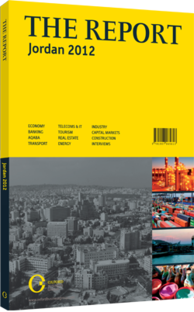Bank Al Etihad: Banking
THE COMPANY: Bank Al Etihad was established in 1978 and is currently the seventh-largest bank in Jordan in terms of assets. In the year 2011, the bank made the headlines with a major rebranding campaign that relaunched the company’s corporate image and changed its name from Union Bank to Bank Al Etihad. The campaign concentrated on delivering the message that the institution is committed to providing the most innovative and professional products to its clients. The rebranding of the bank in 2011 came after four years of collaboration with management consultants McKinsey, during which time the partners worked to formulate a new strategy that concentrated on the bank’s strength in corporate lending while giving the institution the full range of tools it needs to tap into the country’s growing retail and small and medium-sized enterprise (SME) markets.
Bank Al Etihad is an established name in the Jordanian banking sector, with 24 branches, two exchange offices and one branch in Ramallah, Palestine. Moreover, the bank owns a brokerage firm. In mid-2011, the bank had JD100m ($140.52m) in paid-in capital, JD228m ($320.39m) in equity, JD915m ($1.29bn) in customer deposits and JD773m ($1.09bn) in loans, making it a medium-sized Jordanian bank. Bank Al Etihad offers personal, auto and home loans to individuals as well as savings and current accounts. In addition, the bank also offers more exotic saving options, such as fixed deposits and prepaid interest deposit accounts. Moreover, the bank offers debt and credit cards, as well as a variety of online and mobile banking services.
Even with its strong offering of retail solutions, the bank remains focused on its corporate banking clients, to whom it offers overdraft services, discounted bills, business loans, trade finance and credit cards. It is in the corporate segment that we can find true innovative solutions, such as bonded services, wherein the bank offers finance for importers of commercial and industrial machinery that is stored in the bonded area of the free zone before duties and tariffs are paid. Moreover, the bank can provide its clients with additional storage space at discounted prices. Bank Al Etihad also manages to diversify its operations by offering forward, future and option contracts to help its corporate clients manage their risks.
The bank’s rebranding strategy paid off in 2011 as loans grew 5.1% in the first nine months of the year to JD748m ($1.05bn), and customer deposits grew 2.3% to JD933m ($1.31bn). Meanwhile, the bank’s interest revenue grew 3.4% to JD55.7m ($78.27m) and its net interest revenue grew 4.2% to JD32.2m ($45.25m).
DEVELOPMENT STRATEGY: The bank took a decision to draw up a new strategy in 2007, and over the next four years it implemented the strategy and reintroduced itself to the Jordanian market in 2011 with a new name, logo and slogan. The revamped image was backed by a number of new and innovative products aimed at strengthening its core corporate banking segment and capturing more business in the retail and SME markets.
Bank Al Etihad’s platinum credit card is an example of one product that the bank is using to capture a bigger share of the retail segment. This card is tailored to the needs of high-net-worth customers and provides them with added-value services and benefits to meet their demanding lifestyle. At the other end, the bank offers its popular Business Card, which has been tailored to meet the needs and demand of SME business leaders.
At the same time, the bank has not neglected the importance of upgrading its own delivery channels as it has introduced online and phone banking and cyber customer relationship management. Expansion in 2011 was not only limited to services and products, but also to branches. In the early months of 2012, the number of branches at Bank Al Etihad is expected to reach 32, up from 24 in 2011. The expansion in branches, as well as products and services, has been supported by flexible and capable technology solutions, which the bank’s new Oracle Flex Cube system promises to offer.
You have reached the limit of premium articles you can view for free.
Choose from the options below to purchase print or digital editions of our Reports. You can also purchase a website subscription giving you unlimited access to all of our Reports online for 12 months.
If you have already purchased this Report or have a website subscription, please login to continue.

